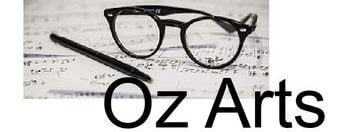W.A.Symphony Orchestra
At the Gallery 3: The Four Seasons
Daniel Kossov (conductor/violin)
Art Gallery of W.A.
reviewed by Neville Cohn
The program leaflet for this concert contained a detailed note by Cathie Travers on After the Requiem, her most recent work. But I deliberately refrained from reading it until I had heard the piece which was given its world premiere performance by the strings of the W.A.Symphony Orchestra for an audience that occupied every seat at the Art Gallery of W.A..

It opens with a sustained single note thus claiming a distant kinship with the opening measures of Borodin’s On the Steppes of Central Asia and Smetana’s String Quartet No 1 (From my Life), the finale of which also has a high-pitched sustained note of dramatic significance; it is the sound that rang in Smetana’s ear as a form of tinnitus that presaged deafness which, more than anything else, tipped him over the edge into terminal madness.
In the right hands, the use of a single note can be a powerful device. And in Travers’ piece, the quietness of this ushering-in of the work was, in its way, more effective than a blaring klaxon in focussing attention on the piece. It gives way to an episode in quasi-folksy style that falls agreeably on the ear, as do measures of a louder, more rhythmically emphatic sort. I particularly liked the effect of high-pitched harmonics that sounded like the twitterings of some angelic aviary. Certainly, listening to the WASO strings upfront and close made for rewarding listening.
A program note provides intriguing information about the genesis of the piece – but it isn’t necessary to know anything about its rationale to derive satisfaction from listening to it. Considered as an essay in musical abstraction, it is more than able to hold its own.
I understand that all fifteen miniatures commissioned by the WASO to mark its 75th anniversary are to be preserved on compact disc. Travers’ piece will be one of the highlights of this collection.
Daniel Kossov, in a white suit, with black, open-neck shirt and shoes, conducted the work and then, directing the WASO strings from the violin – as well as playing from memory (no small feat) – presented Bach’s Violin Concerto in A minor as well as Vivaldi’s Four Seasons.
Although the latter set of four, 3-movement concertos inspired by the changing seasons, is one of the world’s most loved and frequently heard works, it is only very infrequently heard ‘live’ in Perth. So Kossov’s account was of more than passing interest. I found this account as satisfying as that provided by Felix Ayo with I Musici which visited Perth in 1985.
From the opening bars, it was clear that this young musician was the man for the job, bringing a rock solid technique and a fine grasp of style to his presentation. Throughout, Kossov’s colleagues responded to his direction
in an unfailingly musicianly way.
Alan Dodge spoke at length before each work, frequently alluding to this painting or that to illustrate (no pun intended) the points he makes. But, as I am not an art expert (and I imagine this might apply to others who attend these Art gallery concerts) Dodge’ s dissertations, in the absence of images of the paintings, are exasperating rather than enlightening. Would it not make more sense to let us SEE the paintings being talked about. And rather than rabbiting on at length before each piece is played, could it not be arranged for Dodge to give a PRE-concert talk, say at 7:15pm, in the Gallery foyer so that the concert proper can begin on time and be allowed to continue without interruption?
© November 2003
